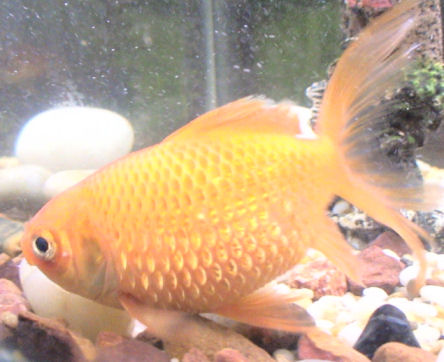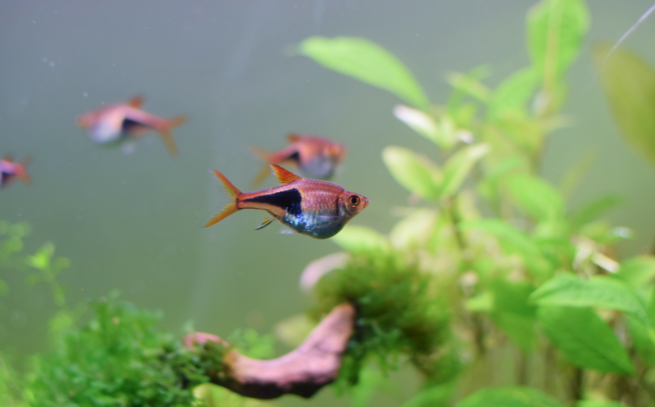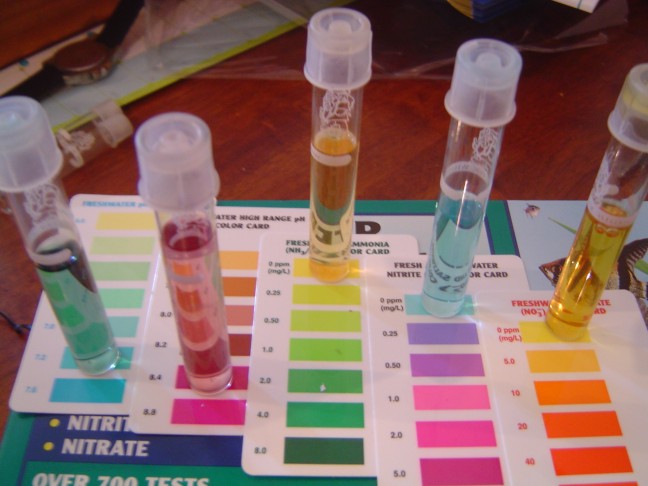Fish Diseases
Just how do you avoid aquarium fish diseases?
For those who like keeping aquariums, fish diseases may be quite difficult since they can cause sickness, suffering, and even death in the fish population.
Thus, illness prevention must be a top priority for aquarium owners. The stress that fish undergo and insufficient maintenance that compromises water quality are the two primary causes of fish illnesses.
Water quality declines as a result of insufficient maintenance practices, including skipping water changes, filter cleaning, and water parameter monitoring.
The ease of transmission for harmful organisms such as bacteria, viruses, fungi, and parasites increases as a consequence, rendering the environment more susceptible to their proliferation.
This heightened vulnerability leads to the manifestation of various illnesses, including bacterial infections and parasite infestations.
Aquarium owners may create and maintain a healthy aquatic environment by following certain maintenance procedures. Regular water changes aid in the removal of trash, surplus nutrients, and accumulated toxins, which lowers the overall pathogen load.
Cleaning the filter regularly provides effective debris removal and maintains optimum water flow, both of which improve the quality of the water. Stress and sickness may be avoided by carefully monitoring and maintaining water factors including pH, temperature, and levels of ammonia, nitrite, and nitrate.
Fish immune systems get weakened by stress, increasing their susceptibility to illness. Numerous factors, such as poor water quality, hostile tank mates, insufficient nutrition, overcrowding, aggressive behavior, abrupt changes in water parameters, and inappropriate acclimation, may cause stress in fish.
The fish's immune system is weakened by prolonged or severe stress, making them more susceptible to opportunistic diseases. It is crucial to provide the fish a proper and peaceful habitat in order to reduce stress. This involves choosing appropriate tank mates based on criteria for the water's parameters, size, and behavior.
By preventing congestion, stress-inducing territorial conflicts and greater competition for resources are avoided. The entire health and immune system of fish are maintained by feeding them a balanced, nutrient-rich diet according to their particular demands as a species.
When introducing new fish, proper acclimation techniques should be used to minimize any stress brought on by abrupt changes in water conditions.
Hobbyists may boost the natural immunity of their fish by properly cleaning the aquarium and reducing stresses. Fish with strong immune systems can fend off the majority of the infections found in aquarium environments, which leads to fewer illnesses and healthier, more energetic fish.
It is crucial to remember that fish infections may still emerge even when precautions are taken. Thus, it is essential to regularly monitor fish activity, appearance, and symptoms of sickness.
An aquarium environment may be less affected by illnesses if they are promptly identified and treated, ideally under the supervision of an aquatic veterinarian or seasoned enthusiast.
Here's a fish (source: wikipedia.com) affected by the dreaded dropsy...
Fish Diseases: Dropsy Example

It is crucial to remember that fish infections may still emerge even when precautions are taken. Thus, it is essential to regularly monitor fish activity, appearance, and symptoms of sickness. An aquarium environment may be less affected by illnesses if they are promptly identified and treated, ideally under the supervision of an aquatic veterinarian or seasoned enthusiast.
The effects may be immediate and severe when the fish's immunity is weakened, and the water quality starts to decrease. It is impossible to exaggerate the value of doing routine water changes since they keep the ecosystem balanced. The right filtration system is essential for creating the best circumstances for the fish, along with good water quality.
It is often feasible to identify ailments in your tank by monitoring unusual fish behavior and appearance. It's crucial to watch out for any symptoms that might point to a shellfish sickness.
Lethargy, actions that imply hiding or brooding, clamped fins, enlargement of the eyes or abdomen, a lack of appetite, and gasping for air at the water's surface are a few of these indications. It's important to learn the usual behavior of the particular fish species that live in your tank, even though this list is a great place to start.
It's critical to pay careful attention to and maintain the water's pH level in accordance with the needs of the particular fish species you are rearing, in addition to keeping an eye on these indicators. Different fish species thrive in different pH ranges, and when their ideal values are not met, stress and health problems might result. Your fish will live in a healthier and more appropriate habitat if the pH level is regularly checked and adjusted as necessary.
A key stressor that jeopardizes the fish's health is overcrowding the tank. A healthy and productive aquarium is threatened by a number of factors that have a substantial influence on water quality:
When fish excrete ammonia into the water via their gills, urine, and solid waste these conditions xan be apparent...
1. Ammonia buildup: Unconsumed food as well as organic debris can raise ammonia levels. High levels of ammonia are very harmful to fish, destroying their delicate gill membranes and preventing proper breathing. A fish's immune system may be suppressed by even minute quantities of ammonia, leaving them more vulnerable to infections.
2. Nitrate and nitrite build-up: Like high ammonia levels, nitrate and nitrite accumulation may be fatal to fish. Beneficial microorganisms in the biological filter convert ammonia and nitrite to nitrate, which is then created. Fish illnesses are more probable and water quality declines when nitrate levels are out of equilibrium. Fish death may occur fast as a consequence of abnormal breathing caused by elevated nitrite levels.
3. Temperature and pH shock: Fish get stressed when there are sudden changes in water temperature or pH levels that are outside of the typical range. Their natural defenses are weakened by increased stress, leaving them more vulnerable to opportunistic infections. A significant number of diseases carried by fish added to a healthy tank may completely overrun the fish population.
4. Poisoning from heavy metals and chlorine: Fish are very poisonous to chlorine, which is often present in tap water. The fish suffers gill damage, which causes asphyxiation. Before adding tap water to the aquarium, using a reliable water conditioner may help neutralize chlorine. Water conditioners are an efficient way to alleviate the issue of heavy metals entering the tank during water changes.
When the aquarium's ecosystem is disturbed, several fish illnesses might develop. Typical examples include:
- Ich, often known as a white spot, is a parasite that affixes itself to the fish's body and irritates it. Fish that are infected could brush against the gravel to feel better. Treatment options for this ailment include raising the water's temperature and taking "Methylene Blue" or "Malachite Green" pills.
- Fish are more prone to fungal infections and fin rot in compromised water environments. Fin rot causes the fish's fins to gradually deteriorate, while fungus causes white cotton-like clumps to form on their bodies. Fish may be helped to recover by being quarantined in a hospital tank, given the proper medicine, and treated with antiseptics.
- Internal infestations, often referred to as dropsy, present as swollen corpses with projecting scales. Fish may get listless and lose their appetite. Unfortunately, it is often too late to rescue the fish by the time these signs show up. To avoid internal infestations and other fish ailments, maintaining a balanced tank environment is essential.
Prior to adding any fish, thoroughly testing the water over a period of one to two weeks, and setting up the aquarium properly are crucial stages in maintaining a balanced tank environment for optimum health.
Aquarium enthusiasts may develop a flourishing and disease-resistant habitat for their fish by proactively addressing water quality, putting in place appropriate maintenance practices, and quickly diagnosing and treating any indications of illness. To ensure the health and lifespan of the aquatic residents, regular observation and preventative maintenance are es
Fish Deseases: Keep Your Aquarium Healthy!

And the best way to do that is to set the aquarium up right from the start and test your water over a week, or two week, period before any fish are introduced.
Below is a graphic of examples from my freshwater aquarium test kit when I set up a tank for my electric yellows...

In it you see the correct ranges for pH values, ammonia, nitrite and nitrate for the electric yellow.
If you do this before you put in your fish they will receive less shocks, be less stressed and less prone to the opportunistic parasites and other fish diseases.
For more information on aquarium fish and
fish diseases click here...
I hope this page was of some help!
Searches Related to Fish Diseases
fish diseases and their control